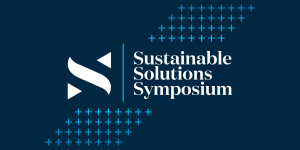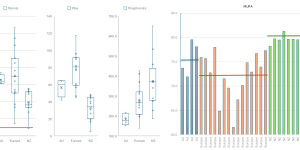Despite headquartered in the US, Kiwi SaaS company Pushpay is building their developer and engineering teams in New Zealand. With Callaghan Innovation support they’re attracting top talent, but at a fraction of the cost of US equivalents.
At a glance
- In the face of slowing church donations, Kiwi SaaS company Pushpay took the fundraising efforts online, developing a leading donation platform.
- Support from Callaghan Innovation has allowed Pushpay to attract top talent and build their developer and engineering teams in New Zealand despite now being headquartered in the US.
- Keeping these teams in New Zealand provides significant cost savings compared to hiring in the US, and has meant they’ve been able to scale faster.
Where we have identified opportunities, which were heavy lifts in terms of time and resources, Callaghan Growth Grants [replaced by the R&D Tax Incentive] have allowed us to make some longer-term strategic investments in our product roadmap by offsetting short-term R&D costs.
- Bruce Gordon, CEO, Pushpay
Taking church donations online
It’s a two to five-minute ritual that takes place on any given Sunday in churches the world over.
That crucial window at the end of the service when as much as a third of the donations from church congregations drop into collection baskets.
Christians view giving as an essential expression of their faith. But religious giving has dropped by 50% since 1990 in the United States alone, a trend attributed to the rise of the “nones” – those with no religious affiliation.
Enter a Kiwi company with the determination to - as Pushpay Co-founder Chris Heaslip once put it - make giving as simple as “buying a song on iTunes”. Only the most engaged congregations are defying the downward trend in giving and Pushpay’s online donation platform is increasingly powering their fundraising activities.
Attracting home-grown talent
A three-person start-up based above a gym in Glenfield just eight years ago, Pushpay now has just under 400 staff and over 7,500 customers across the US, Canada, Australia and New Zealand.
However, while the vast majority of Pushpay’s business is done in the US, where it is headquartered in Redmond, Washington, the company has maintained its software engineering and product development teams – around 100 people – in New Zealand.
Keeping its powerhouse of development in New Zealand has allowed Pushpay to attract the best people. And integral to building their engineering and development teams were grants from Callaghan Innovation - like the R&D Experience Grant - to support R&D.
Now replaced by the R&D Tax Incentive, Callaghan Innovation Growth Grants also allowed the business to bolster its R&D efforts as it grew.
“Where we have identified opportunities, which were heavy lifts in terms of time and resources, Callaghan Growth Grants have allowed us to make some longer-term strategic investments in our product roadmap by offsetting short-term R&D costs,” says Pushpay’s CEO Bruce Gordon.
Hamish Mitchell, Customer Manager, Digital at Callaghan Innovation, says Pushpay has benefited from intensive recruitment processes, a strong culture between its two offices and heavy investment in upskilling its software engineers.
“This has resulted in a high-performing team that’s been able to react to the level of growth the organisation has achieved,” Mitchell says.
Scaling a world-class product for a fraction of the cost
For Pushpay, keeping development at home has not only meant the ability to scale faster, but it has also gone down well with investors given the result has been industry-leading software and products.
Salary expectations for New Zealand-based developers significantly are lower than in the ‘first tier’ tech hubs, such as San Francisco, Seattle and New York, or the ‘second tier’ hubs such as Austin, Portland and Raleigh. This has meant Pushpay’s set-up also provides “significant cost advantages,” says Gordon, despite the “unusually high quality of software development talent” in New Zealand.
“In practice this works out to a 50 to 60% discount compared to hiring US-based developers,” says Gordon.

Pushpay CEO, Bruce Gordon



















